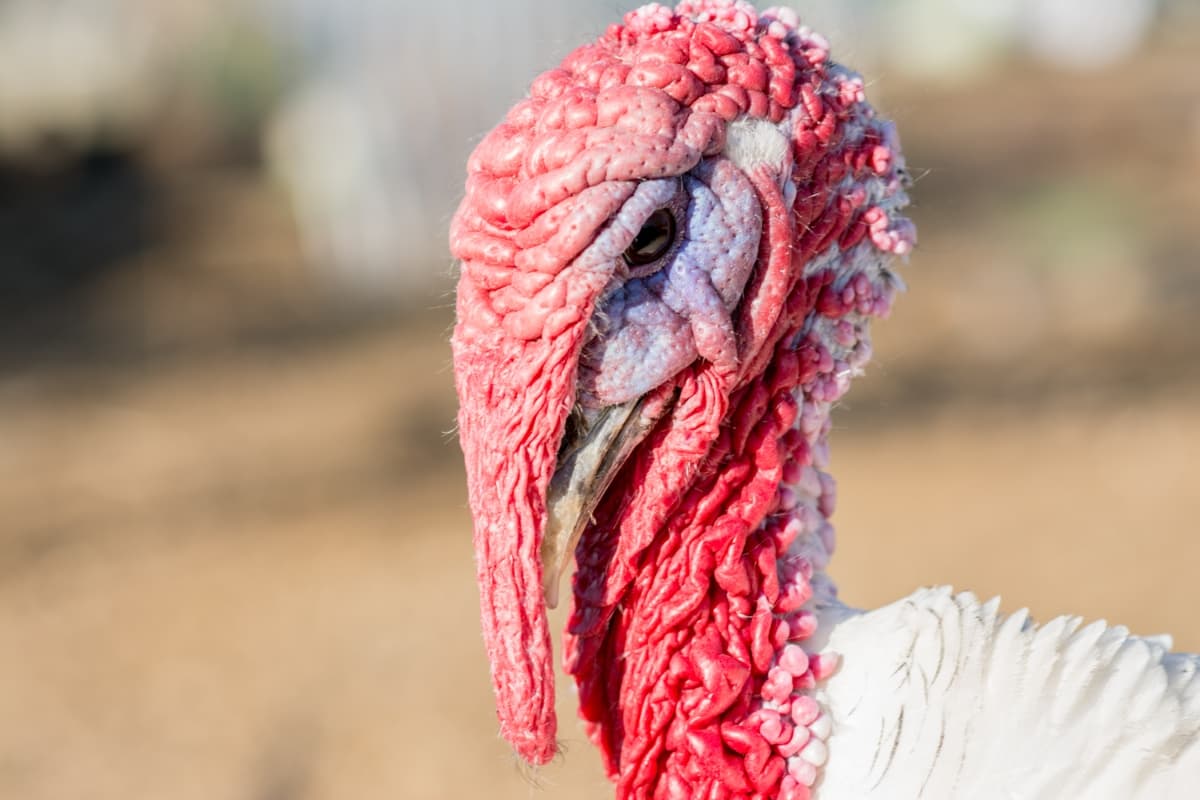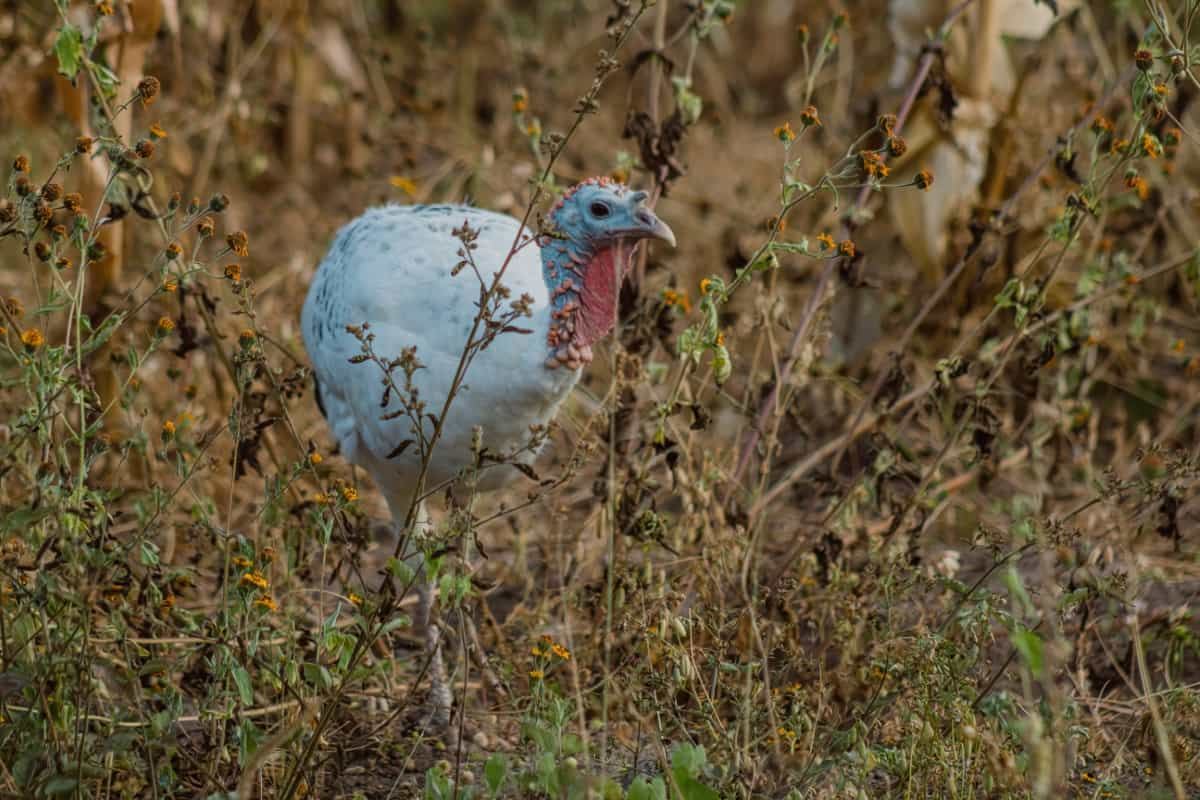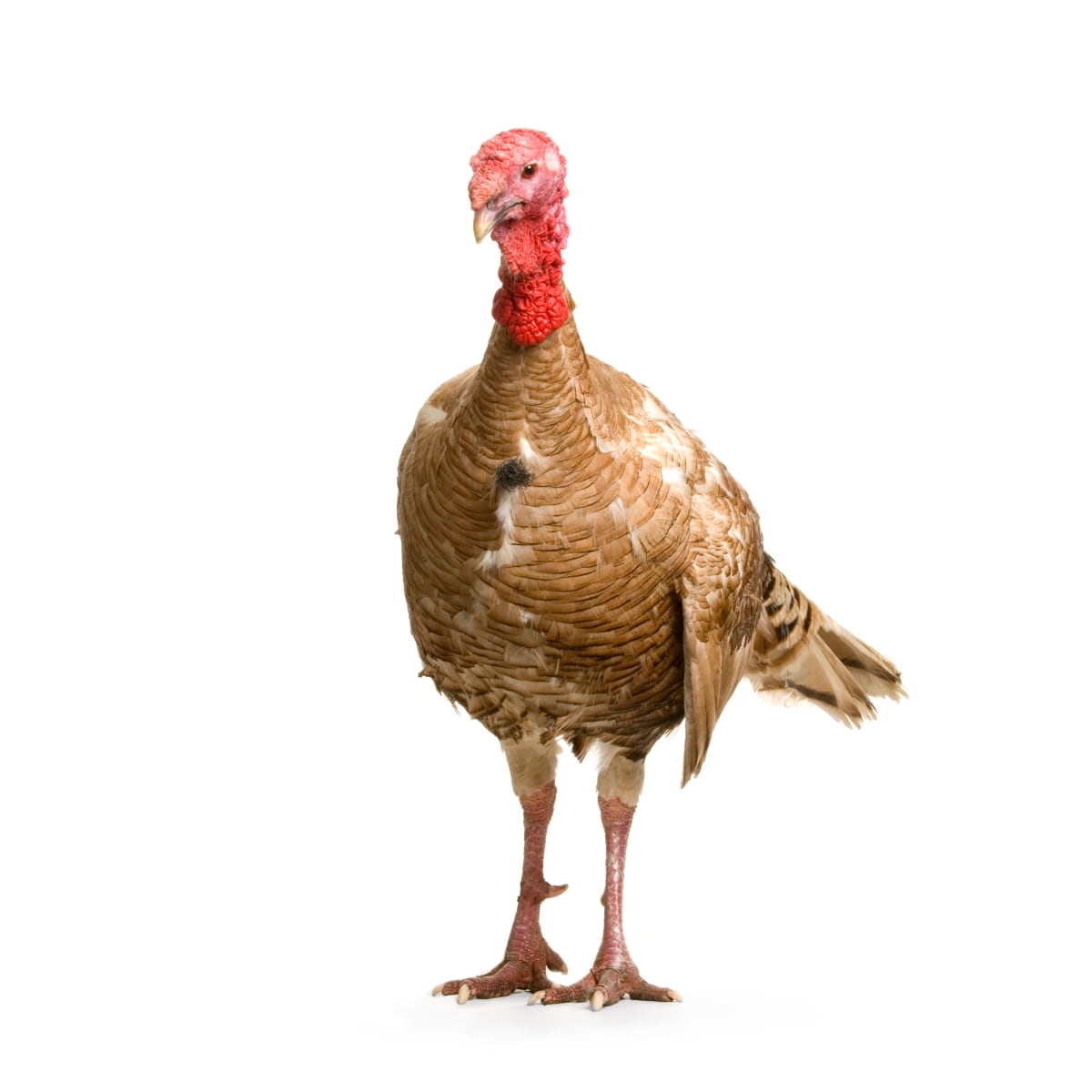Slate Turkeys, also known as Blue Slate turkeys, are a captivating breed of domestic turkey that sport a stunning slate gray plumage. These birds are truly unique and eye-catching, with their distinctive color setting them apart from other turkey breeds. Slate Turkeys provide an excellent source of meat. By raising these turkeys, you can ensure a sustainable source of high-quality protein for your family or even start a small-scale turkey meat business.

All You Need to Know About Slate Turkey
Slate Turkey Breed Profile
| Breed Name | Slate Turkey |
| Breed Size | Medium to large |
| Size | Male – Around 10.5 kg Hen – Around 6.3 kg |
| Climate Tolerance | Almost all climates |
| Color | Slate gray |
| Use | Meat, Exhibition, also for eggs |
| Egg Color | Pale cream to medium brown with spotting |
| Egg Size | Large |
| Rarity | Common |
| Country/Place of Origin | United States |
Characteristics
One of its most striking features is its slate-gray plumage, which gives it a unique and eye-catching appearance. Aside from their physical attributes, Slate turkeys are known for their temperament. They are generally docile birds that can be easily tamed if handled properly from a young age. However, it’s important to note that male Slates have been observed displaying aggression towards others.
Another characteristic of Slate turkeys is their adaptability to various climates. Whether you live in a hot or cold region, these birds can thrive and withstand different weather conditions. Furthermore, Slate turkeys have become popular choices for exhibition purposes due to their unique coloring and overall appearance. Their slate gray feathers make them stand out among other breeds in competitions and shows.
Temperament
Temperament plays an important role in the overall personality of any animal, including Slate turkeys. Slate turkeys have a temperament that is generally easy to tame and docile. They are known for their calm and gentle nature, which makes them great for those looking for a turkey breed that is not overly aggressive or difficult to handle. However, it’s important to note that the males of this breed can sometimes display aggression.
While the overall temperament of Slate turkeys is usually mild-mannered, it’s crucial to monitor their behavior closely, especially during breeding season when males may become more territorial and protective. Providing ample space for these birds to roam freely can also help alleviate any potential aggression issues.
Origin and History
The Slate turkey is a domestic turkey breed from the United States. Its name comes from the distinctive slate-gray color of its plumage, which sets it apart from other turkey breeds. This unique coloring gives the Slate turkey a striking appearance that many poultry enthusiasts find appealing. The exact origins of the Slate turkey are somewhat shrouded in mystery. It is believed to have been developed in Pennsylvania during the 19th century through selective breeding efforts by local farmers.
In case you missed it: Jersey Buff Turkey: Breed Characteristics, Origin, Size, Uses, Price, Breeding, and Lifespan

These early breeders aimed to create a hardy and adaptable variety of turkeys that would thrive on small farms. Over time, this breed gained popularity due to its beautiful coloration and its ability to adapt well to various climates. As a result, it became widely distributed across different regions of the United States. Today, Slate turkeys are considered a heritage breed, meaning they have a long history and genetic lineage that has remained relatively unchanged over time.
Size and Weight
The Slate turkey is a breed that falls under the medium to large size category. On average, adult males can weigh around 10.5 kilograms, while hens typically reach weights of approximately 6.3 kilograms. These turkeys have a robust build with broad chests and strong legs, contributing to their impressive size.
Their substantial weight makes them an ideal choice for those looking to raise turkeys primarily for meat production. In addition to their size, Slate turkeys possess other desirable traits that make them popular among poultry enthusiasts worldwide. Their slate-gray plumage adds an aesthetic appeal to any flock and distinguishes them from other breeds.
Uses
The primary use of the Slate turkey breed is for meat production. With their medium to large size, they provide a substantial amount of flavorful and tender meat that is highly sought after. In addition to being raised for meat, Slate turkeys are also popular in exhibition shows. Their unique slate-gray plumage and striking appearance make them stand out among other turkey breeds. Many enthusiasts take pride in showcasing these beautiful birds at various poultry events.
Furthermore, Slate turkeys can also be kept as pets or ornamental birds on farms or homesteads. Some individuals choose to raise Slate turkeys for their eggs. While not as prolific egg layers as some chicken breeds, the pale cream to medium brown eggs with spotting are still valuable additions to any farm’s egg basket. Whether it’s for meat production, exhibition purposes, companionship, or egg collection – the uses of Slate turkeys are diverse and offer something for everyone interested in raising these distinctive birds on their property.
Price Range
Generally, adult birds can be found for prices ranging from $25 to $30. However, keep in mind that if the demand is high, these prices can increase and reach up to $50. The cost of Slate turkeys can vary due to several reasons, such as availability, location, and quality of the birds.
Lifespan
The lifespan of Slate turkeys is a fascinating aspect to consider when raising these beautiful birds. Unlike their wild turkey counterparts, which typically live between 3 and 5 years, the Slate turkeys have a longer lifespan, ranging from 5 to 9 years. This extended lifespan allows for more time to enjoy the company and benefits that come with raising them.
Care and Management
These birds require proper attention and care to ensure their well-being. One important aspect of caring for Slate Turkeys is providing them with a suitable living environment. In terms of feeding, it’s important to provide a balanced diet for these turkeys. A nutritious diet consisting of grains, seeds, fruits, vegetables, and protein sources will help maintain their health and promote optimal growth. Additionally, fresh water should be available at all times. Regular health check-ups are essential to monitor the overall well-being of Slate Turkeys.
In case you missed it: Norfolk Black Turkey Breed: Characteristics, Origin, Size, Uses, Price, Breeding, and Lifespan

Breeding and Reproduction
To ensure a healthy flock, it is important to understand the breeding process and take the necessary steps for successful reproduction. When it comes to breeding Slate Turkeys, one must consider several factors. Selecting the right pair of birds is crucial. It’s recommended to choose a mature hen and a compatible tom with desirable traits such as good body conformation and strong genetics.
The mating season for Slate Turkeys typically begins in late winter or early spring. Once mating occurs, the female turkey will lay eggs in a secluded nest she has carefully prepared. Incubation usually takes around 28 days before adorable poults hatch from their shells. Raising poults requires careful attention as they are delicate during their early stages of life. Providing them with appropriate warmth, proper nutrition, and adequate space is crucial for their growth.
In case you missed it: Norfolk Black Turkey Breed: Characteristics, Origin, Size, Uses, Price, Breeding, and Lifespan

Conclusion
Raising Slate Turkeys can offer numerous benefits for those who are looking to add a unique and valuable addition to their homestead. These birds have distinct characteristics that make them stand out from other turkey breeds, making them a popular choice among poultry enthusiasts.
Note: The images presented in this post are intended solely for representation purposes. The images are meant to serve as visual aids and should not be relied upon as accurate representations of their real-life counterparts.
- Ultimate Guide to Ossabaw Island Hog: Breeding, Raising, Diet, and Care
- Ultimate Guide to Juliana Pig: Raising Facts, Size, Diet, Care, and Lifespan
- Raising Lleyn Sheep: Disadvantages, Price, Uses, Characteristics, and Care
- Ultimate Guide to Meishan Pig: Breed Facts, Breeding, Raising, and Care
- Ultimate Guide to Teacup Pigs: Raising, Diet, Lifespan, Cost, and Care
- Guide to Raising Poll Dorset Sheep: Facts, Profile, Characteristics, Uses, and Care
- Ultimate Guide to Bighorn Sheep: Characteristics, Diet, Lifespan, Breeding, and Lifecycle
- Ultimate Guide to Raising Katahdin Sheep: Farming Facts, Breed Profile, Uses, and Care
- Ultimate Guide to Raising Oreo Cows: Belted Galloways Farming Facts, Profile, Uses, and Care